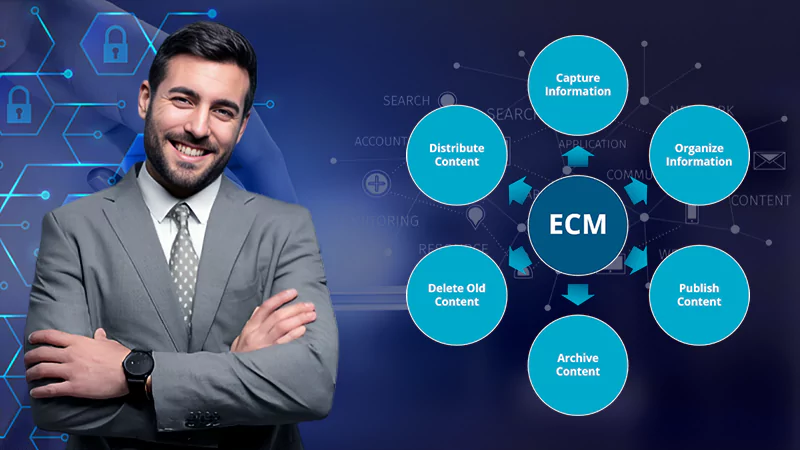Streamlining the Equipment Management Process for Business
Modern businesses presently face a myriad of challenges regarding equipment management. With an array of physical assets to keep track of, from office supplies to heavy machinery, efficiently managing these resources can often be a daunting task. Yet it is crucial in optimizing operations, maintaining budgetary control, and ensuring seamless business continuity.
The significance of equipment and asset management tools cannot be overstated. They empower businesses to efficiently track, manage, and maintain their assets, resulting in improved productivity, cost savings, and better decision-making. Whether it is equipment in a manufacturing plant, vehicles in a fleet, IT assets in an office, or camera equipment for a photography business, investing in equipment inventory software and other tools is crucial for any organization that wants to achieve long-term success and sustain a competitive edge in the market. Keep reading to learn about ways in which to navigate and streamline the process of equipment management for improved business efficiency.
The Significance of Efficient Equipment Management
Efficient equipment management acts as a vital heartbeat of an organization. The entire lifecycle of an organization’s assets, from procurement to disposal, necessitates detailed and organized management. Businesses need to track the usage, maintenance, and eventual disposal of each piece of equipment, as well as manage the costs and risks associated with this process. These tasks not only reduce overheads but also enhance productivity by ensuring that the right tools are available when needed, thus helping to avoid costly downtime or project disruptions.
Moreover, companies with advanced asset management strategies can benefit from improved financial performance. Equipment is a substantial investment for most businesses and, therefore, needs adequate protection and monitoring. With optimized management, companies can analyze the cost of ownership, assess the value of assets, prevent loss through misplacement or theft, and ultimately make informed decisions regarding the replenishment or retirement of equipment.
Lastly, regulatory compliance is a critical factor in equipment management. Legislation in many jurisdictions requires organizations to maintain accurate records of their assets. Non-compliance can result in severe penalties and damage to a company’s reputation. It is here, in accurate record-keeping and efficient reporting, that an efficient equipment management strategy becomes indispensable.
Challenges in Traditional Equipment Management
Despite their recognition of its importance, many businesses struggle with equipment management. Traditional methods involving manual spreadsheets or physical paperwork can be time-consuming and fraught with the potential for human error. Information can be lost, misplaced, or misunderstood, leading to disruptions in workflow and increased operational costs.
Furthermore, a lack of transparency in traditional asset management strategies can result in unauthorized usage or misappropriation of equipment, decreased lifespan due to poor maintenance, or even legal implications stemming from regulatory non-compliance. Additionally, as businesses grow and their asset base becomes more diverse and geographically dispersed, manual equipment management can become a complex, unwieldy process.
Finally, traditional methods lack scalability and adaptability. In a business world characterized by rapid change and technological advancements, organizations need strategies that can adjust and grow in tandem with their evolving needs. Spreadsheet-based systems or pen-and-paper methods simply cannot provide the level of adaptability and scalability required by modern businesses.
Technological Innovation in Equipment Management
Technological advancements have created exciting possibilities for equipment management. One such innovation is the use of Radio Frequency Identification (RFID) tags for tracking assets. These tags contain electronically stored information about the asset, such as its location, condition, and usage history. They can be scanned via RFID readers, providing real-time information to managers and minimizing the chance of theft or loss.
Similarly, the Internet of Things (IoT) has revolutionized the concept of equipment management. IoT has made it possible to connect a myriad of devices to the internet, making them “smart.” This connectivity allows managers to monitor and control these devices remotely, optimizing usage and identifying maintenance issues before they result in costly downtime.
Another example is the use of equipment inventory management software. This software enables managers to keep accurate, real-time records of their assets. It can facilitate the tracking of equipment location, maintenance schedules, and usage history, mitigating the risk of misplacement and ensuring efficient operation. Equally crucial, this software provides robust reporting and analytics, empowering decision-makers with insights into equipment performance and cost-effectiveness.
Implementing Successful Equipment Management Strategies
Whether a business is transitioning from traditional methods or starting from scratch, there are several considerations for implementing a successful equipment management strategy. Firstly, it’s essential to consider the organization’s specific needs and goals. This includes understanding the size and complexity of equipment inventories, the scope of operations, and financial objectives.
Secondly, collaboration between various stakeholders is essential. This might involve the purchasing department, operations, IT, and even the finance team. Comprehensive planning and combined input ensure that the adopted strategy aligns with the organization’s broader ethos and objectives.
Lastly, investing in appropriate technology is crucial. Choosing the right software or technologies requires careful analysis of the organization’s needs and an understanding of the available solutions in the market. Whether it’s RFID, IoT, or equipment inventory software, the chosen option must align with business needs, be user-friendly, and offer scalable solutions for the future.
Long-term Benefits of a Modern Approach
A forward-looking, modern approach to equipment management carries several long-term benefits. Efficient equipment management raises productivity levels by ensuring that necessary assets are readily available when needed. Providing a complete overview of equipment usage, maintenance schedules, and inventory levels eliminates the wasted time and resources that occur when these factors are mismanaged.
Further, a modern approach enables businesses to stay ahead of technological trends and regulatory changes. With an up-to-date equipment management strategy, businesses can quickly adapt to new tech developments, promptly act on insights gained from accurate reporting and analytics, and ensure compliance with changing legislative landscapes.
Lastly, good management saves money in the long term. By highlighting and preventing potential losses, tracking the lifecycle costs of assets, and promoting the optimal usage of equipment, sound resource management enhances the bottom line, making for a more profitable and sustainable enterprise.
The Role of Employee Education

Finally, it is important to recognize the role of employee training and education in effective equipment management. Regardless of the sophistication of a company’s equipment management strategy, it is ultimately employees who will be using the equipment and implementing the strategy.
For a strategy to be successful, employees must understand the importance of responsible equipment use and accurately reporting equipment condition and usage. Continued employee training and constant communication about the process, its benefits, and how to use any supporting technology can ensure compliance and the overall effectiveness of the strategy.
Moreover, cultivating an organizational culture that values good equipment stewardship and accountability can transform a well-designed strategy into a winning one. An engaged workforce that understands and supports efficient equipment management practices can significantly support the business’s overall growth strategy.
Overall, efficient equipment management is an integral part of successful business practice. With the right strategy, technology, and team in place, companies can reap significant benefits, from cost savings and better regulatory compliance to improved productivity and a streamlined business operation. It’s all about investing in the right tools, and with modern technological advancements, now is the time to make that wise choice. In the age of rapid technological advancement, can your business afford not to?
Follow Us
Latest Post















